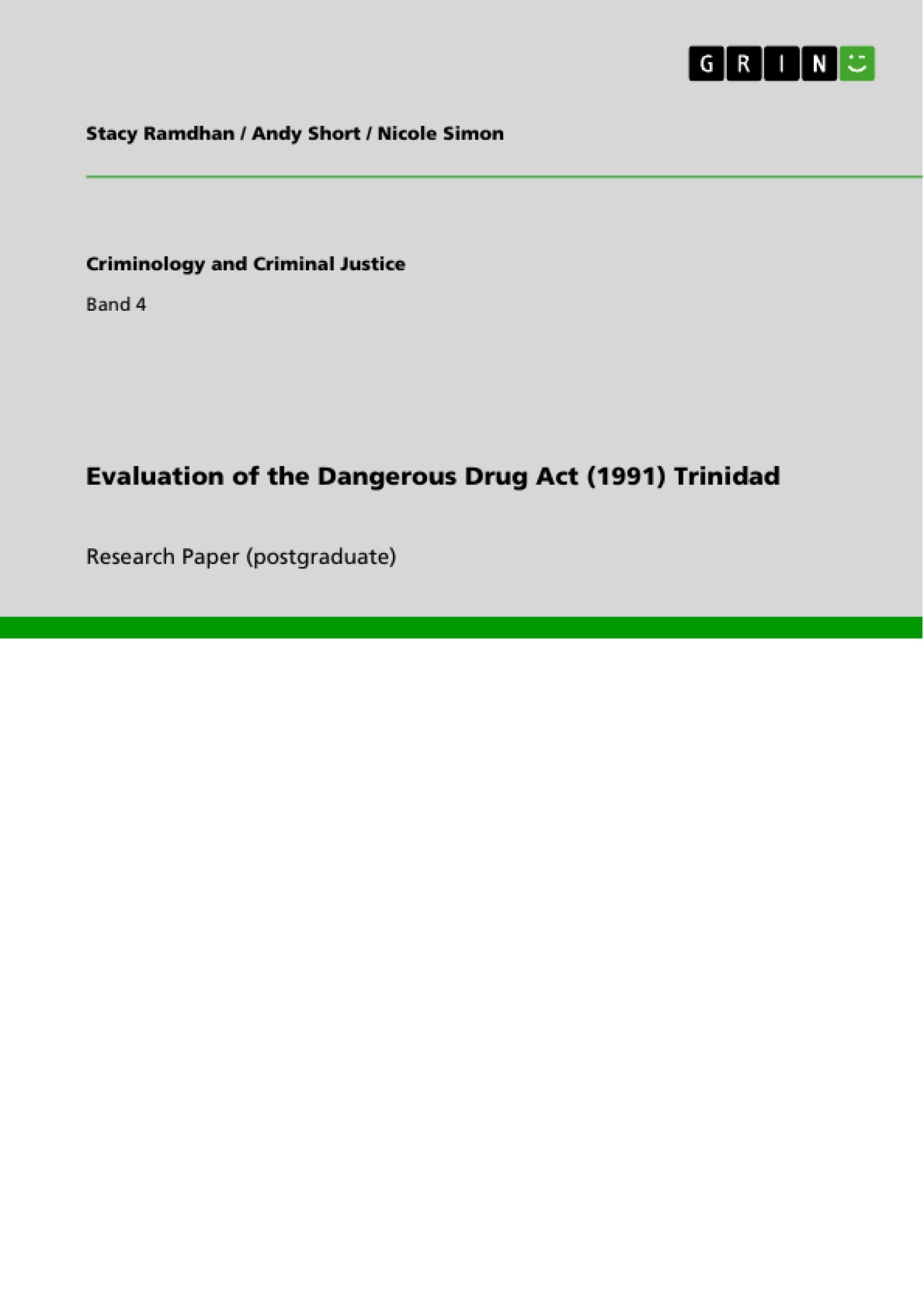Trinidad and Tobago illicit drug transhipping economy is premised upon the transhipping of cocaine and heroin from Venezuela to markets in Europe and the US and the production of marijuana for local consumption and export. “There then exist complex multi- realities illicit drug economy operating in Trinidad and Tobago which has over the years developed complex power relations between the licit economy and the illicit drug economy, between the political elites and the illicit drug economy and between officials of the state and the illicit drug economy” (Figueira, 2004).
The drug trade is an organised worldwide industry, where suppliers do whatever is necessary to ensure that their trade continues without apprehension of reprisal or conviction. The problems associated with illegal narcotics and narco-trafficking have affected the legal, social, economic, political and psychological fabric of Caribbean societies. The development of the country is distorted when resources have to be channelled from development investments to drug trafficking eradication strategies (Chadee, 1998).
Problems associated with substance abuse, production of illicit drugs and drug trafficking cause harm to individuals, families and communities which are reflected in serious problems such as disintegration of the family institution, the decline of community life, poor performance at school and the emergence of violence and intimidation as an acceptable approach to life. The illicit drug activity both trafficking and abuse and it resulting manifestations such as crime, armed violence, money laundering and corruption pose challenges to the overall development of Trinidad and Tobago.
Deoseran & Chadee (1997) found that just over 6% of all incarcerated youths in Trinidad and Tobago were placed into juvenile homes for drug related crimes/offences. Currently there has been 914 drug related offence over the 3 months period in 2011. It has also been estimated by the TTPS and CAPA for 2010 there were 4474 drug offences, which has been on a steady increase since the year 2000, on average a total of 5059 cases per year; a total of 50,593 drug offenses over a 10 year period. These figures just allow us to see the nature and the extent of the drug problem that exist in Trinidad.
Law enforcement authorities indicate that the presence of cocaine in the country has led to a dramatic increase in criminal activity.
Inhaltsverzeichnis (Table of Contents)
- Introduction
- Problem Statement
- In-depth Analysis of Drug Policy
- Ideological Assumptions
- Theoretical Implications
- Limitations of the Drug Policy
- Methodological Hurdles
- Policy Alternatives/Amendments
- Theories/Models in support of policy
- Amendments/alternatives
- How does the model countering the Ideological Assumptions of current policy?
- Countering Methodological Hurdles Identified previously.
- Conclusion
Zielsetzung und Themenschwerpunkte (Objectives and Key Themes)
This report evaluates the Dangerous Drug Act (1991) of Trinidad and Tobago, examining its effectiveness in addressing the complex and pervasive issue of illicit drug trafficking and abuse. The report analyzes the act's ideological assumptions, theoretical underpinnings, and practical limitations, while exploring potential policy alternatives and amendments.
- The impact of illicit drug trafficking on the social, political, and economic fabric of Trinidad and Tobago.
- The limitations and shortcomings of the Dangerous Drug Act (1991) in addressing the drug problem.
- The ideological assumptions and theoretical frameworks underpinning the current drug policy.
- Potential policy alternatives and amendments to address the drug problem more effectively.
- The challenges of enforcement and the impact of the drug trade on the criminal justice system.
Zusammenfassung der Kapitel (Chapter Summaries)
The introduction establishes the context of illicit drug trafficking and abuse in Trinidad and Tobago, highlighting its prevalence and the significant social, economic, and political ramifications. The report then delves into a detailed analysis of the Dangerous Drug Act (1991), exploring its historical background, legal framework, and policy objectives. It examines the act's ideological underpinnings, theoretical implications, and the limitations it faces in addressing the complex issue of drug trafficking and abuse.
The report further explores the methodological hurdles associated with the implementation of the act, including the challenges of data collection, enforcement, and resource allocation. It also examines alternative policy approaches and amendments that could enhance the effectiveness of the act, drawing upon relevant theoretical frameworks and models.
Schlüsselwörter (Keywords)
The primary keywords and focus topics of this report are: illicit drug trafficking, drug abuse, Dangerous Drug Act (1991), Trinidad and Tobago, policy evaluation, ideological assumptions, theoretical implications, methodological hurdles, policy alternatives, amendments, crime and public policy, criminal justice system.
- Quote paper
- MSc Criminology and Criminal Justice Stacy Ramdhan (Author), Andy Short (Author), Nicole Simon (Author), 2011, Evaluation of the Dangerous Drug Act (1991) Trinidad, Munich, GRIN Verlag, https://www.grin.com/document/175650



